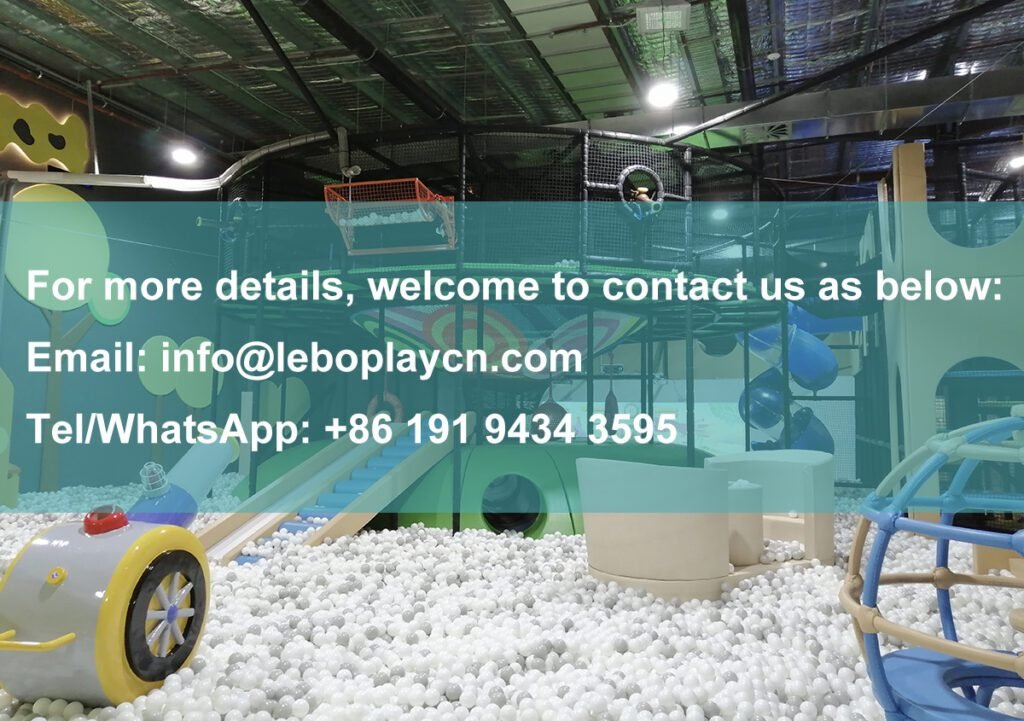Introduction
Indoor playgrounds are a creative, funny, and profitable business. Kids indoor playground provides families with a safe space for kids to explore, learn, and interact while providing parents with much-needed respite. But behind every successful indoor playground is a well-thought-out business plan. Creating such a business plan for an indoor playground requires a combination of imagination, strategic thinking, and practicality.
In this comprehensive guide, we’ll delve into some key elements that you must include in your indoor playground business plan. Whether you are an aspiring entrepreneur or seeking investment, these key elements will put you on the path to operational excellence, revenue growth, and unparalleled guest satisfaction.

The Importance of Indoor Playground Business Plan
Starting or expanding an indoor playground business or family entertainment center is an exciting venture, but success depends on careful planning. A well-structured children’s indoor playground business plan can not only guide your journey but also attract investors.
Here are a few key reasons why it’s important to create an indoor playground business plan.
1. A Clear Vision: A business plan helps clarify the vision and mission of your indoor playground. It outlines the goals and objectives of your indoor playground business, providing clear direction to the entrepreneur and stakeholders.
2. Strategic Planning: Before developing an indoor playground business plan, you need to conduct thorough market research in your area and analyze the competitive parks. This strategic planning process helps identify opportunities, anticipate challenges, and develop strategies to leverage strengths and offset weaknesses.
3. Risk Management: Through conducting a comprehensive analysis of the market and industry trends, a business plan enables venue operators to identify potential risks and uncertainties. This allows them to develop contingency plans and risk management strategies to minimize potential pitfalls.
4. Resource Allocation: Indoor playgrounds require different types of resources, such as money, personnel, and physical assets. A carefully crafted business plan can help distribute these resources efficiently, ensuring optimal utilization and efficiency of operations.
5. Attract Investors and Financing: Investors and lenders frequently ask for a business plan to assess the viability of the business and potential return on investment (ROI). A detailed and well-researched business plan can attract funding from outside parties by demonstrating the profitability and growth potential of your indoor playground business.
How to create an indoor playground business plan
1. Executive Summary
Kick off your business plan with a captivating executive summary. This section should convey your project’s vision, mission, target audience, unique selling proposition (USP), and primary objectives. It’s the hook that grabs the attention of potential investors, partners, or lenders, enticing them to explore further.
2. Business Description
Provide a detailed overview of your indoor playground concept. Describe the types of attractions and facilities you plan to offer, such as indoor play structures, slides, ball pits, and themed play areas. Highlight any additional services, such as birthday party packages, daycare services, snack bars, or parent lounges. Explain how your indoor playground will stand out from competitors and create a memorable experience for visitors.
3. Market Analysis
Conduct a thorough market survey to understand the demand for indoor playgrounds in your target area. Analyze demographic data to identify your primary and secondary target markets, such as families with young children, daycare centers, or event planners. Assess the competitors, including existing indoor playgrounds, family entertainment centers, and other recreational facilities. Identify growth opportunities and potential challenges that may impact your indoor children’s playground business.
4. Marketing and Sales Strategy
Outline your marketing and sales tactics to attract customers and increase revenue. Develop a multi-channel marketing plan that leverages online and offline channels, such as social media, search engine optimization (SEO), email marketing, local advertising, and community outreach. Consider forming partnerships with schools, daycare centers, and local businesses to expand your reach. Define your pricing strategy, including admission fees, membership options, and any additional revenue streams.
5. Operational Plan
Detail the day-to-day operations of your indoor playground, including staffing requirements, hours of operation, safety protocols, and maintenance procedures. Create an organizational chart that outlines roles and responsibilities for management, frontline staff, and support personnel. Identify suppliers for equipment, supplies, and inventory, ensuring quality and cost-effectiveness. Establish plans to address emergencies, equipment malfunctions, or unforeseen challenges.
6. Financial Forecasts
Present financial projections that demonstrate the revenue potential and profitability of your indoor playground business. Include income statements, cash flow forecasts, and balance sheets for the first three to five years of operations. Factor in start-up costs, such as site lease or purchase expenses, indoor playground equipment purchases, labor costs, marketing expenses, etc. Justify your predictions using realistic assumptions based on market research, industry benchmarks, and historical data.
7. Funding Requirements
Specify the amount of funding required to start and maintain your indoor playground business. Determine whether you’ll seek financing from investors, lenders, or personal savings. Clearly outline how the funds will be used, whether for start-up costs, working capital, or expansion plans. Provide stakeholders with a breakdown of equity investment, debt financing, and potential returns. Make a compelling case for why your indoor playground is a good investment opportunity.
Conclusion
Starting an indoor playground business plan requires careful planning, creativity, and strategic thinking. By following these essential steps and combining market research, marketing strategies, operational plans, and financial projections, you can create a roadmap for success. Remember, a well-crafted business plan not only serves as a guide for your indoor playground business but also as a persuasive tool to attract investors, lenders, and partners who share your vision for your business. Create a magical space where children can play, learn, and grow.
Assuming you want to thrive in the kid indoor playground business, you have to differentiate yourself from your competitors as a venue operator. Therefore, if you really want to start an indoor playground business, you must determine the types of elements your park must have over other parks and how to provide unique experiences for your customers that compel them to come again and again.
One way to keep customers coming back excitedly and increase the level of fun is to offer adventure indoor play equipment. At Lebo Play, we have everything you plan to build a memorable and outstanding kids indoor playground.

